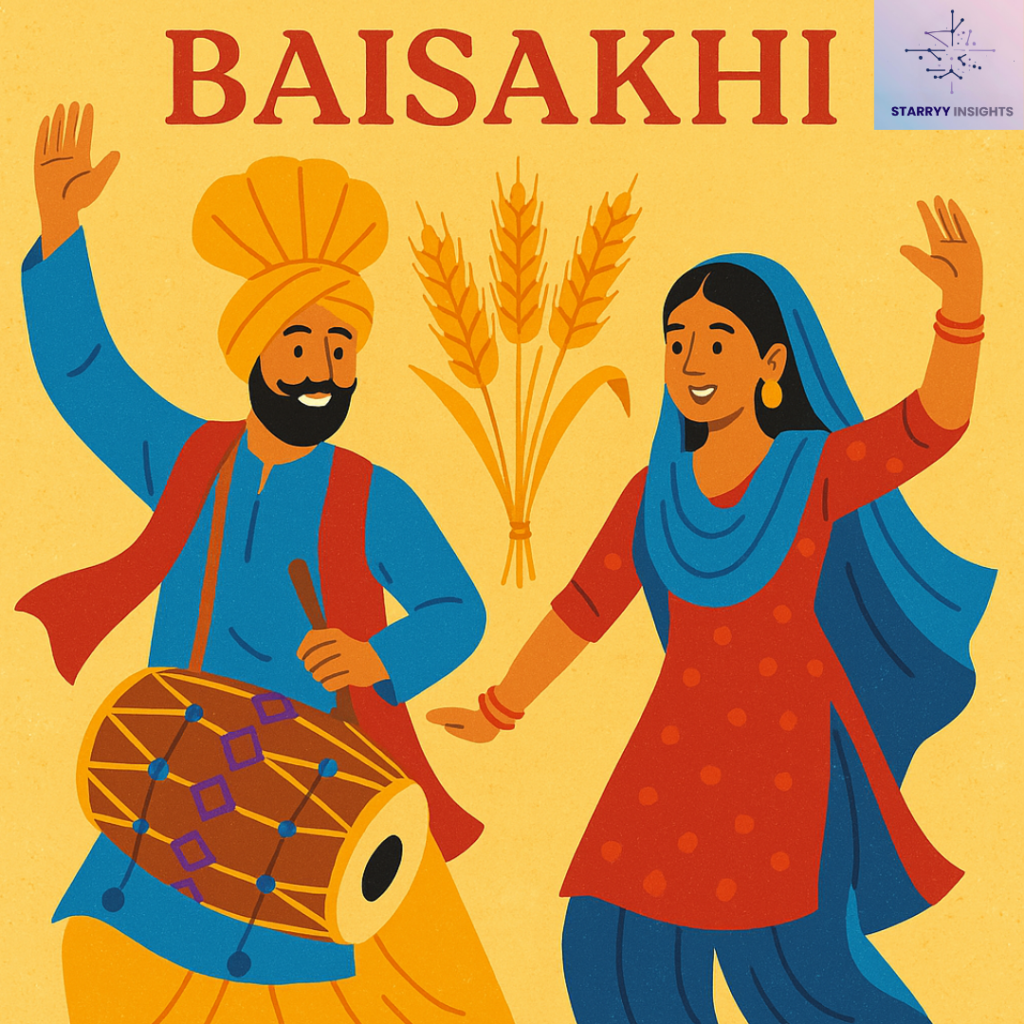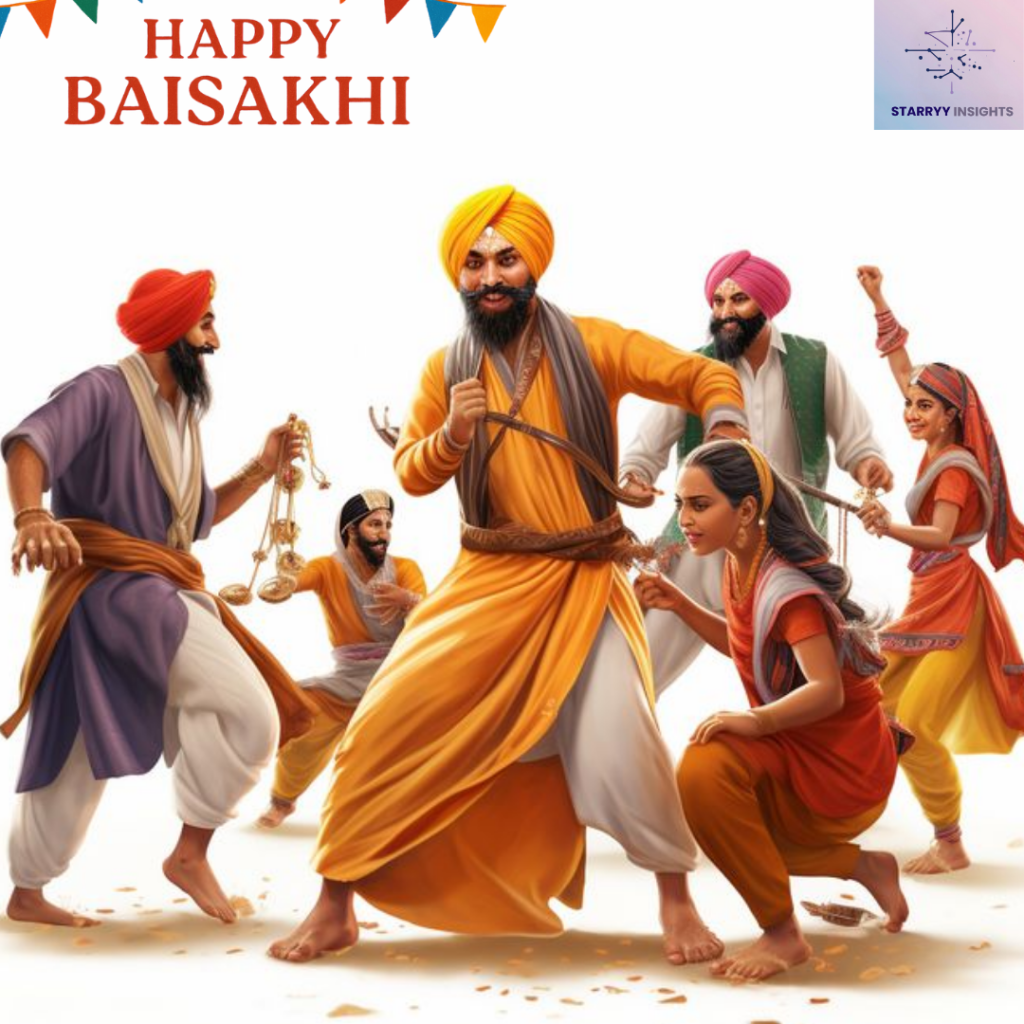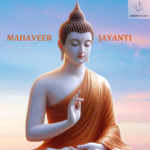Vaisakhi, also known as Baisakhi, is a vibrant celebration that carries immense religious, historical, and cultural significance. Baisakhi 2025 will take place on April 13, 2025. Marking the solar new year for many communities in the Indian subcontinent and commemorating a transformative moment in Sikh history, Vaisakhi is observed in diverse ways by communities across the globe.

Historical Foundations and Religious Significance
The Formation of the Khalsa and Sikh Identity
One of the most pivotal moments in Sikh history occurred on Vaisakhi 1699 when Guru Gobind Singh, the tenth Sikh Guru, established the Khalsa. This seminal event not only transformed Sikh society but also set a precedent for maintaining a disciplined and principled way of life. Here are some facets of this historical turning point:
- Establishment of the Khalsa:
Guru Gobind Singh called upon his followers on Vaisakhi to rise above the limitations of the existing social order and to embody high moral and ethical standards. Through the Amrit Sanchar (baptism ceremony), devotees were initiated into the Khalsa. This rite was not merely symbolic—it required initiates to adopt a strict code of conduct, wear the distinctive Five Ks (Kesh, Kara, Kanga, Kachera, Kirpan), and commit to defending justice and equality.
- Spiritual and Temporal Responsibilities:
The creation of the Khalsa underscored a dual commitment: the pursuit of spiritual enlightenment alongside readiness to defend righteousness in everyday life. The rich symbolism and enduring traditions that emerged from that day are celebrated each year on Vaisakhi.
- Legacy and Continued Relevance:
Today, the principles of the Khalsa continue to inspire countless Sikhs globally. The legacy of bravery, unity, and compassion that was established on that historical Vaisakhi remains a guiding light for modern practitioners.
Vaisakhi as a Harvest Festival and the Solar New Year
Vaisakhi is not only of profound religious importance but also marks the celebration of the harvest season—especially in the agrarian communities of Punjab and the northern regions of India.
- Agricultural Significance:
Traditionally, Vaisakhi coincides with the ripening of rabi (winter) crops. Farmers celebrate a season of abundance and express gratitude for nature’s bounty. Rituals and ceremonies during this time often include blessings for the forthcoming harvest and prayers for prosperity.
- Cultural Renewal:
In a broader cultural context, Vaisakhi heralds the onset of a new solar year. This aspect of the festival is marked by various local traditions and festivities that emphasize hope, renewal, and communal festivity.
- Interfaith Observance:
Although deeply rooted in Sikh tradition, Vaisakhi is observed by Hindus—especially in northern India—as the solar new year. Temples and community centers host special prayers and festivities to welcome the new year with auspicious beginnings.
Traditions and Customs: Bridging Religion, Culture, and Community
Religious Observances in the Gurdwara
For Sikhs, Vaisakhi is an occasion to reaffirm faith and commitment to the teachings of the Gurus. The core components of religious observance during Vaisakhi include:
- Amrit Sanchar (Baptism Ceremony):
During Vaisakhi, many Sikhs opt to undergo the Amrit Sanchar, a formal baptism ceremony. This ritual signifies a deep commitment to the ideals of the Khalsa—courage, equality, and spirituality. Those initiated pledge to uphold the virtues of honesty, selflessness, and service to humanity.
- Gurdwara Services:
Devotees flock to Gurdwaras (Sikh temples) where special services are held. These services feature:
- Kirtan (Devotional Singing): Traditional hymns, often accompanied by instruments like the harmonium and tabla, fill the air with spiritual resonance.
- Katha (Exposition of Scriptures): Religious discourses explain the historical significance and moral lessons embedded in Sikh scriptures and the life of Guru Gobind Singh.
- Recitation from Guru Granth Sahib: The holy scripture of Sikhism is recited, highlighting its timeless wisdom and spiritual guidance.
- Kirtan (Devotional Singing): Traditional hymns, often accompanied by instruments like the harmonium and tabla, fill the air with spiritual resonance.
- Langar (Community Kitchen):
One of the most emblematic practices of Sikhism is the Langar, wherein a free meal is served to all visitors regardless of caste, creed, or social status. During Vaisakhi, many Gurdwaras prepare elaborate Langars that cater to thousands of devotees. This practice exemplifies Sikh principles of equality, sharing, and community service.
Cultural Expressions: Dance, Music, and Public Celebrations
Vaisakhi is as much a cultural celebration as it is a religious one, with an array of events that spotlight the rich heritage of Punjab and northern India.
- Folk Dances and Music:
The jubilant sounds of folk music and the energetic movements of traditional dances are the heartbeat of Vaisakhi festivities.
- Bhangra: Often described as one of the most lively and engaging dance forms, Bhangra is synonymous with Punjabi culture. It is performed by groups, often in traditional attire such as turbans and vibrant salwar-kameez, symbolizing joy and communal solidarity.
- Giddha: A dance performed mostly by women, Giddha is characterized by rhythmic clapping, expressive gestures, and humorous storytelling. It has become an integral part of social celebrations.
- Traditional Instruments: Instruments like the dhol (drum), tumbi (string instrument), and algoza (double flute) play a critical role in setting the festive mood. These sounds, steeped in tradition, carry the stories and emotions of generations.
- Bhangra: Often described as one of the most lively and engaging dance forms, Bhangra is synonymous with Punjabi culture. It is performed by groups, often in traditional attire such as turbans and vibrant salwar-kameez, symbolizing joy and communal solidarity.
- Nagar Kirtan (Processions):
Many Sikh communities organize Nagar Kirtans—a religious procession that winds through the streets. Participants, often adorned in traditional dress, carry banners and share hymns that call for justice, peace, and unity. The processions not only serve as a means of communal expression but also act as a visual affirmation of Sikh identity and pride.
- Community Fairs and Melas:
In many towns and villages, Vaisakhi is celebrated with public fairs (melas) that showcase local art, handicrafts, and culinary delights. These fairs create a festive space where people from various walks of life come together to rejoice in shared cultural traditions.
Social Outreach and Modern Engagement
Modern observances of Vaisakhi have also embraced social outreach, reflecting contemporary values and community service:
- Charity and Social Services:
Many Vaisakhi celebrations involve initiatives such as blood donation drives, health camps, and environmental clean-up projects. These activities are manifestations of the Sikh value of “seva,” or selfless service, reaching far beyond the spiritual confines of the festival.
- Virtual Celebrations and Digital Engagements:
With global migration and the expansion of digital media, many communities now host live-streamed services, webinars, and online cultural festivals. These digital platforms not only make the celebrations accessible to a worldwide audience but also help bridge the geographic divide between generations and communities.
- Eco-Friendly Practices:
Reflecting a modern sensibility towards environmental conservation, several Vaisakhi events in 2025 plan to incorporate eco-friendly measures. From the use of biodegradable materials in decorations to initiatives focusing on sustainable agriculture, this eco-conscious approach aligns with the global movement towards a greener, more responsible celebration of traditions.
Deep Dive into Cultural and Regional Variations

The Punjabi Connection
Punjab, often considered the cultural heartland of Vaisakhi, plays a central role in shaping the festival’s customs and practices. The Punjabi traditions imbue Vaisakhi with a distinct flavor characterized by:
- Agricultural Celebrations:
The festival originated as a harvest festival, a time when farmers celebrated the fruition of their hard work with communal meals, folk dances, and fairs. Although urbanization has transformed some of these traditional practices, the heart of the celebration remains intact in rural regions where the harvest still dictates the rhythm of life.
- Language and Literature:
Punjabi literature and folklore are rich with references to Vaisakhi, often portraying it as a time of renewal, hope, and resilience. The poetry, songs, and folk tales passed down through generations provide context and continuity to the festival, reinforcing communal memories and shared identities.
- Culinary Traditions:
Food plays an integral role in the celebrations. Traditional Punjabi cuisine—featuring dishes like sarson da saag, makki di roti, lassi, and various sweets—forms an essential component of the festivity. These culinary traditions not only celebrate the harvest but also serve as a medium for cultural expression and communal bonding.
Interfaith Perspectives and Regional Diversity
While Vaisakhi is synonymous with Sikhism and Punjabi culture, its observance is far more diverse across regions:
- Hindu Celebrations:
In many parts of northern India, Vaisakhi is celebrated as the solar new year. Temples and religious institutions conduct special pujas (worship sessions) to invoke blessings for the new year. The rituals here often emphasize renewal, fertility, and prosperity for the communities, reflecting the agricultural and seasonal rhythms of the land.
- Diaspora Celebrations:
Around the world, the Sikh diaspora has adopted Vaisakhi as a way to stay connected with their roots. In countries like Canada, the United Kingdom, Australia, and the United States, community centers and Gurdwaras host large-scale events. These celebrations are often marked by elaborate processions, cultural exhibitions, and multimedia presentations that not only celebrate heritage but also educate the broader public about Sikh traditions.
- Regional Adaptations:
Depending on local customs and conditions, Vaisakhi celebrations can differ from one region to another. For instance, in urban centers, festivities may incorporate modern elements such as laser light shows and public concerts, while rural communities might adhere strictly to age-old practices passed down through generations.
Using these keywords in blog posts, social media updates, and event advertisements ensures that the rich layers of tradition, faith, and cultural heritage associated with Vaisakhi are effectively communicated to diverse audiences.
Additional Perspectives for baisakhi 2025
Global Connectivity and Digital Inclusion
In today’s interconnected world, Vaisakhi celebrations have embraced the digital realm. Many communities will host live streaming of Gurdwara services and cultural events on platforms such as YouTube, Facebook, and other social media sites. This inclusion not only ensures that people across continents can participate but also fosters a global dialogue on the values of compassion, community, and cultural heritage.
Embracing Environmental Sustainability
In response to global environmental concerns, several Vaisakhi celebrations in 2025 will incorporate eco-friendly measures. This could include:
- Biodegradable Decorations: Replacing traditional materials with those that minimize environmental impact.
- Sustainable Food Practices: Sourcing ingredients locally to reduce carbon footprints and support local farmers.
- Community Environmental Projects: Organizing tree-planting campaigns and clean-up drives in the spirit of stewardship and sustainable living.
Education and Cultural Preservation
Educational initiatives surrounding baisakhi 2025 will likely see increased emphasis, with community centers and educational institutions hosting workshops, lectures, and exhibitions. These events focus on:
- Historical Narratives: Detailing the formation of the Khalsa and the evolution of Sikhism.
- Cultural Heritage: Showcasing Punjabi art, literature, and the broader traditions of northern India.
- Youth Engagement: Involving younger generations in traditions to ensure that the cultural and religious narratives are passed on effectively.
Economic and Social Impact
Vaisakhi also has a significant economic impact in regions like Punjab and among the diaspora. The festival boosts:
- Local Markets: With the surge in demand for traditional clothing, jewelry, and festive foods.
- Community Projects: Which often receive funding and sponsorship due to the festival’s communal nature.
- Tourism: As many visitors are drawn to major celebrations in cities like Amritsar, Vancouver, London, and beyond, seeking to experience the vibrant cultural heritage firsthand.
Conclusion
Baisakhi 2025 is much more than a single-day event—it is a celebration of faith, community, and cultural identity that resonates deeply with millions across the world. From the historical significance of the Khalsa formation to the agricultural optimism of the harvest season, and from the spirited display of traditional arts to modern eco-friendly practices, Vaisakhi exemplifies a rich convergence of traditions that have evolved with time.
As you prepare to celebrate or learn more about baisakhi 2025, this comprehensive guide is intended to provide a thorough understanding of the festival’s multifaceted dimensions. Whether you are attending a local Gurdwara, joining in a communal Langar, or participating in a virtual event, the spirit of Vaisakhi is one of renewal, unity, and unwavering commitment to social justice and equality.
May your baisakhi 2025 celebrations be filled with joy, reflection, communal harmony, and a renewed commitment to the timeless values of service and spirituality.
Frequently Asked Questions (FAQs) about baisakhi 2025
To further enhance understanding, here is an FAQ section that addresses common queries about Vaisakhi:
1. What is Vaisakhi, and why is it celebrated?
Answer:
Vaisakhi is a festival celebrated as both the Sikh New Year and a harvest festival. It commemorates the formation of the Khalsa in 1699 by Guru Gobind Singh, marking a major reformative moment in Sikhism. Simultaneously, it celebrates the harvest season and the beginning of a new solar year for many in northern India.
2. When will baisakhi 2025 be celebrated?
Answer:
Baisakhi 2025 is scheduled to be celebrated on April 13, 2025. This date aligns with traditional solar calendar calculations, which give the day its cultural and religious significance.
3. How do Sikh communities observe Vaisakhi?
Answer:
Sikh communities observe Vaisakhi through several rituals and ceremonies:
- Amrit Sanchar (Baptism Ceremony): Devotees may choose to be initiated into the Khalsa.
- Gurdwara Services: Involving Kirtan (devotional singing), recitations from the Guru Granth Sahib, and discourse.
- Langar (Community Meal): A free meal served to all, symbolizing unity and equality.
- Nagar Kirtan (Procession): A public parade to demonstrate the community’s vibrant spirit and shared identity.
4. What cultural activities are typically part of Vaisakhi celebrations?
Answer:
The cultural festivities during Vaisakhi include:
- Folk Dances: Bhangra and Giddha are performed with great enthusiasm.
- Music: Traditional instruments such as the dhol, tumbi, and algoza are central to the celebration.
- Community Fairs and Melas: These gatherings showcase local arts, crafts, and produce.
- Processions: Colorful and energetic processions that highlight the communal identity of Sikh and local communities.
5. Can non-Sikh communities participate in Vaisakhi celebrations?
Answer:
Absolutely. While Vaisakhi has deep roots in Sikh tradition, many aspects of the festival—such as its agricultural and cultural celebrations—are embraced by non-Sikh communities as well. In northern India, Vaisakhi is celebrated as the solar new year by Hindus, and global diaspora communities often welcome participants from all backgrounds to share in the festivities.
6. How is Vaisakhi relevant in today’s modern, global society?
Answer:
Vaisakhi today represents not only historical and religious significance but also the adaptability of ancient traditions. Modern celebrations include virtual events, eco-friendly initiatives, and social outreach programs. These contemporary facets ensure that the festival remains relevant to the global Sikh community and others who appreciate its values of unity, service, and renewal.
7. What role does the Langar play in Vaisakhi celebrations?
Answer:
The Langar is a cornerstone of Sikh tradition, exemplifying the values of equality and community service. On Vaisakhi, the communal meal prepared at Gurdwaras becomes a symbolic expression of sharing, where every individual—regardless of social background—eats together as equals.




Pingback: Celebrating Mahaveer Jayanti: Significance Traditions 2025